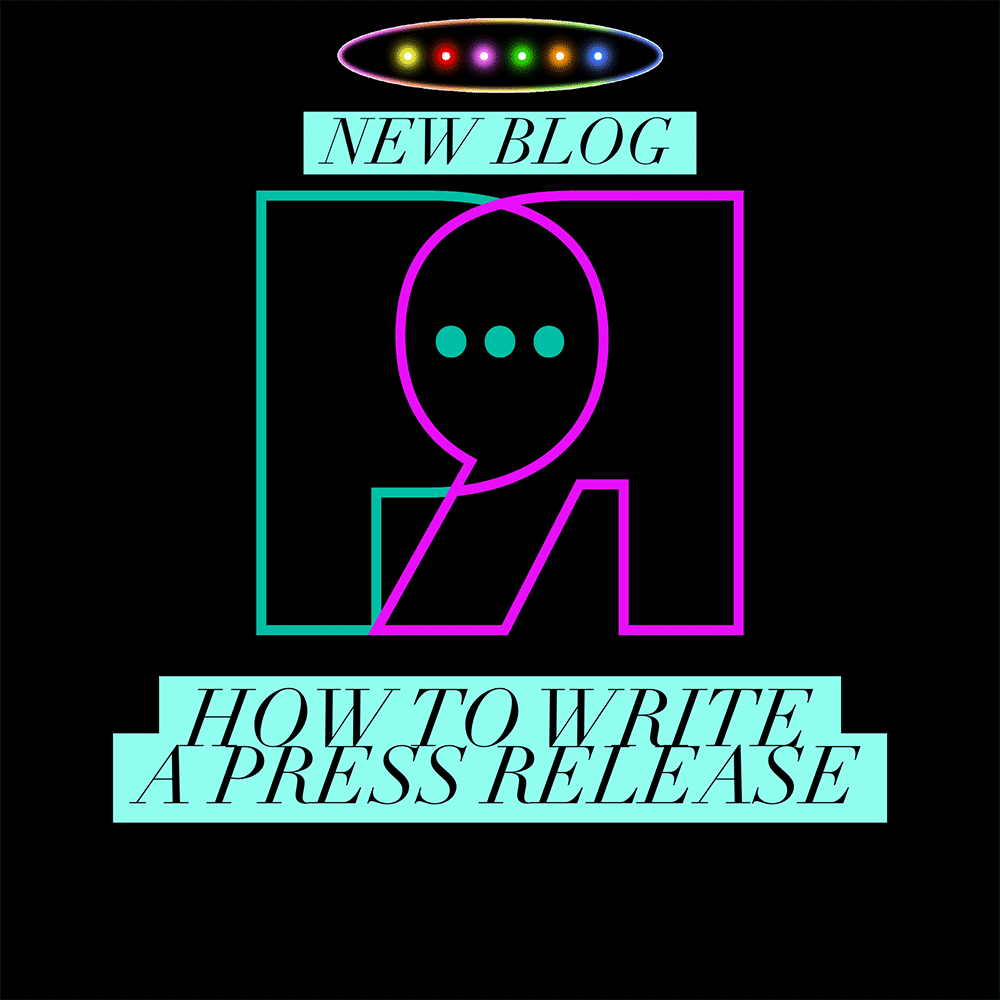
How To Write a Press Release
The modern recording artist needs to be multifaceted. Thats a notion which is echo’d all over the world in the early 2020s so let us just stop and think about that for a moment. There is a lot to learn; the mechanics of the business, rights administration, digital distribution, PR and so much more and thats assuming that you are an artist that has already created an artistic and sonic identity for your project. In this blog, I’m going to focus on PR and more specifically, how to create a press release.
Firstly, let’s just define PR. It means public relations. In a nutshell, it is the art form of gaining media that communicates you, the artist, and your song/s to a new or existing audience through print or online sources. Quite simply, we’re talking about marketing.
There are two schools of thought on this subject:
Firstly, you stump up some cash for a specialist with a proven track record in your genre. This will be a person or a company that has an arsenal of connections. They will create a campaign in partnership with you and your team (or just you!) and they’ll do their best to get the ball rolling on finding the right features.
OR
Secondly, you learn the ropes yourself and carefully self navigate through the new digital (and sometimes murky!) world of online PR.
Either way no results are guaranteed. Thats the grown up truth. (PR specialists are nodding along whilst reading that sentence).
So where do you start? You start by asking yourself a question: What is the purpose of you trying to get press attention? Whats your pitch? Let’s assume it is for a release of some kind. Firstly, “Artist X releases new song” is hardly a selling point for a blog feature. You’ll need to think outside the box. Whats your angle? This is one of the first questions that a PR specialist would ask you so if you’re doing this yourself you will still need to answer that question. Is there something in your back story that is a human interest story? Is there something that your lyrics touch on which is topical? Once you’ve found your angle you’ll then need to think about who you are trying to reach out to. Is it magazines? If so what kind of readers are you hoping to connect with? Perhaps you are looking to reach out to music bloggers that specialise in release type features? Perhaps you are running your very own radio campaign? Whatever the case is you will need to start by composing a press release.
Be as succinct as possible and keep it simple.
Here’s my tips:
1) Title. An attention grabbing title is key. Fabricate the truth if you have to. Ensure it stands out. This is a competitive industry and you’re competing with a lot of people. Make people want to read more.
2) FFO. This stands for “For Fans Of”. List known artists that are similar to you. Who could you share a playlist with? Who would you ideally like to support on tour? This information will help the recipient to figure out suitability. It is also worth bearing in mind that many bloggers will copy and paste sections of your press release and use it directly in a feature. If you mention artists that are similar to you and they run with it then Spotify’s NLP (Natural language Processing) algorithm could scan it and this could influence your “Fans Also Like” section on Spotify.
3) The release details. Start with a large font for the first paragraph. Outline the release details. The name of the artist, the name of the song, the release format and when it will be released. This doesn’t need to link with your press release title.
4) The song details. Now move into a slightly smaller font and talk about the details of the song. Talk about the genre, give an explanation as to how the song sounds. Keep this to two or three sentences at most. If you’ve written this section correctly, this section will give the reader an idea of how the song sounds before they’ve even heard it.
5) The narrative. Touch on the story. This is where you link to your press release title and explain its relevance it if you haven’t already. Also touch on the artist’s story. No more than two sentences here and try and round up your pitch at this point.
6) Quotes. Include some quotes which endorse you. This could be anything from a previous blog feature to a local radio presenter to a local music producer.
7) Contact details. It sounds simple I know but ensure that all contact details are here. (social handles, email, website, phone number).
8) Link to the song. The song is not yet released so you will need a private link to the song. I recommend Soundcloud for this. You will be able to set it to private for your pre-release period and public once the song is released. Lots of taste makers, bloggers, radio producers and curators like Soundcloud. It is a trusted source and it is a weblink based service. Do not send MP3s.
9) EPK. You will need an electronic press kit which contains all of your creative assets such as photos, videos, songs, contact details (again), business cards, your logo/s, cinemagraphs and anything else that could be useful for people when writing about you.
10) Finally, be patient and be polite. Good manners will serve you well throughout your career.
Where to send your press release?
Whoever you would like to write about you. www.submithub.com offers a credit based system where you can pitch your song and press release to a range of bloggers, playlist curators, radio stations, streamers and social influencers. www.musosoup.com offer a slightly different service in as much as that you can submit your press release and song for a small fixed fee for bloggers and journalists to read and write about. Or perhaps you would like to research some individual blogs and reach out directly to them. Perhaps you have purchased the Indie Bible or a similar style of Ebook that gives you the contact details of bloggers? It is entirely up to you. Just remember to be polite and respectful.
When to send your press release?
I recommend having your press release ready 6 weeks prior to release. It is a very healthy habit to get into and many bloggers will appreciate you thinking and acting in advance. Also, many of the good ones tend to line up their features many weeks in advance so getting in early is crucial.
Finally, do some research. Have a look around the internet. It will help to shape your understanding of how all of this works. Have a look on Hype Machine www.hypem.com and see how features are worded. Perhaps even think about an interactive PDF with built in hyperlinks to your socials and music. In any case, let this process be useful and yield results. Once you’ve learned the basics you will have created a blueprint for which your future releases can benefit from.
